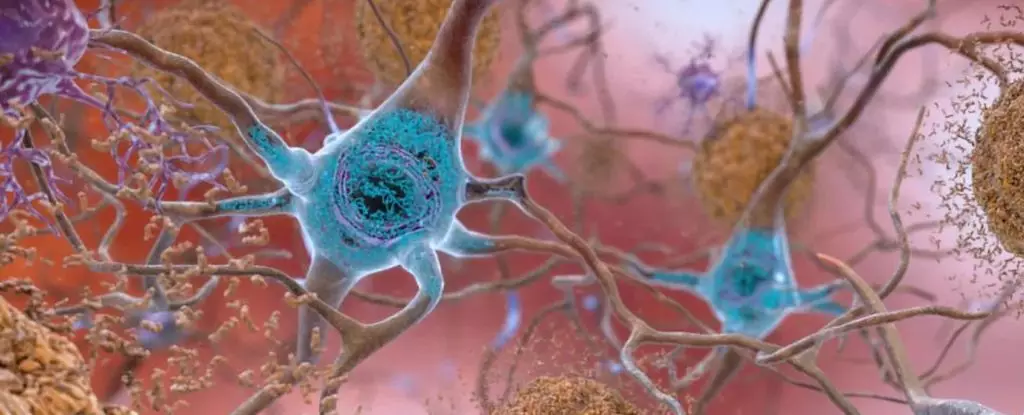The complexities of the human brain have long baffled scientists and laypeople alike, especially concerning the onset of neurodegenerative diseases like dementia and Alzheimer’s. Recently, a protein known as BMP (brain-derived lipid mediator) has emerged as a key player in maintaining brain health, serving as a “garbage collector” for harmful lipids. The discovery of BMP’s unique properties raises important questions about its role in neurodegenerative diseases, highlighting an intricate biochemical relationship that could hold answers for better disease management.
Despite being a lipid itself, BMP has a crucial role in the brain’s waste management system. It effectively seizes harmful fats that could contribute to neurodegeneration, a function that seems paradoxical when one considers that lipids can often accumulate and cause damage. Researchers at the Sloan Kettering Institute, led by Shubham Singh, have delved into this enigma, uncovering how BMP avoids degradation and maintains its protective functions. Their research identifies two specific enzymes, PLD3 and PLD4, that facilitate the formation of BMP into a stable, resistant structure. This leads to its survival in the cellular environment, allowing it to perform its protective functions.
Understanding the biochemical mechanics behind BMP’s resistance to degradation is critical. Abnormal levels of BMP have been associated with heightened susceptibility to dementia, including Alzheimer’s disease. Notably, individuals suffering from frontotemporal dementia often present with significantly reduced BMP levels, leading to an accumulation of gangliosides—sugary lipids that can be toxic to neurons. The research suggests that the absence of BMP allows these harmful lipids to proliferate unchecked, putting neuronal health at risk.
With over 10 million new cases of dementia diagnosed annually worldwide, the implications of this research are profound. The symptoms of dementia—confusion, memory loss, and communication difficulties—deeply affect not just the patients, but their families and communities. Recent findings indicate that by administering BMP to cells affected by gangliosidosis, a condition resulting from ganglioside toxicity, researchers can observe recovery at the cellular level. This opens new paths for potential therapies targeting lipid imbalance in the brain.
One of the most intriguing aspects of BMP is its unique molecular structure. It exists in a rare “left-handed” form, diverging from the more common “right-handed” configurations found in most lipids. This peculiarity can impose specific metabolic penalties, particularly in the context of liposomal biochemistry, which has traditionally centered around straightforward lipid behaviors. The revelation that it is specifically PLD3 and PLD4 that produce BMP’s left-handed form alters our understanding of lipid production and regulation.
The findings surrounding the enzymes involved in BMP’s synthesis challenge previous assumptions in the field. Prior to this research, another enzyme was thought to contribute to BMP production, but the evidence now points to PLD3 and PLD4 as the true orchestrators of BMP’s unique structural identity. The implications are significant; alterations to either enzyme can modulate BMP levels substantially, suggesting a clear link between these proteins and the pathology of various dementias. A mutation in PLD3 has been associated with a marked reduction in BMP production, raising concerns about its potential role in accelerating neurodegeneration.
Moreover, the intricate relationship between brain lipids and neurodegenerative diseases like dementia highlights that much remains to be uncovered. Each lipid behaves according to complex biochemical rules that can dramatically influence cellular health. The study of BMP not only brings hope for better understanding and management of diseases like Alzheimer’s but also emphasizes the need for more research into lipid metabolism as a potential therapeutic avenue.
The intricate workings of brain lipids like BMP illuminate the profound complexity of the human neurological landscape. As researchers peel back the layers of lipid biochemistry, significant strides can be made toward better understanding neurodegenerative diseases. The relationship between BMP, its synthetic enzymes, and their roles in conditions like Alzheimer’s may eventually offer therapeutic pathways in a field that has often struggled for answers. Continued research into these molecular relationships could herald new paradigms in treating and perhaps even preventing cognitive decline, offering hope to millions affected by the debilitating symptoms of dementia. The journey to unveil the depths of brain health has only just begun.

